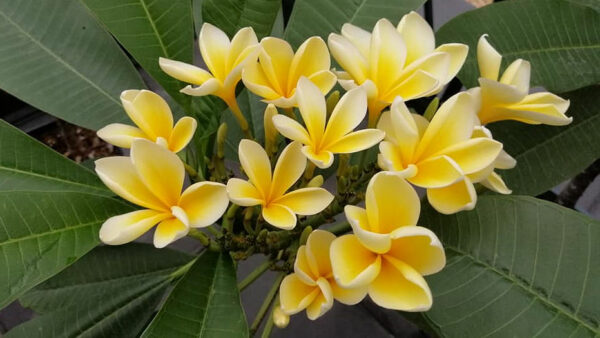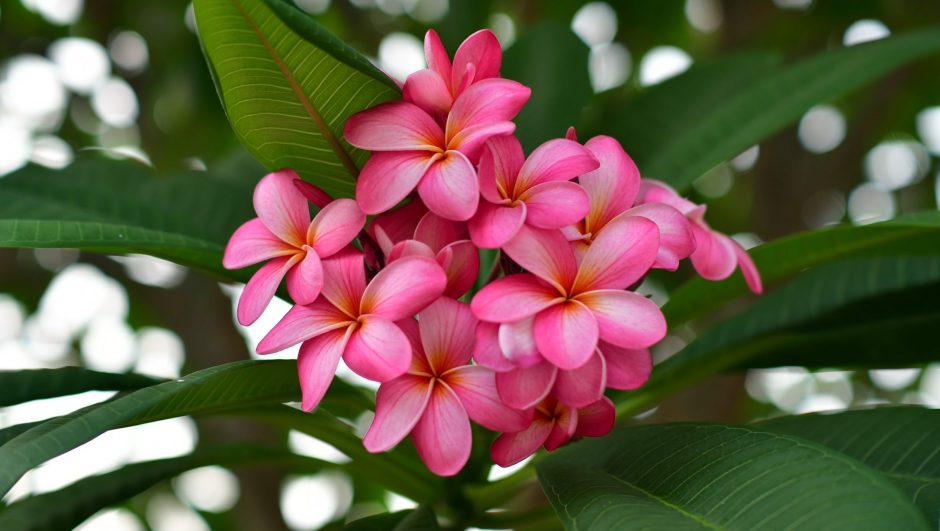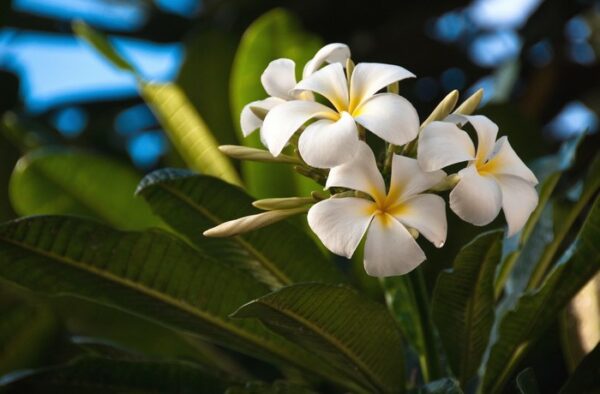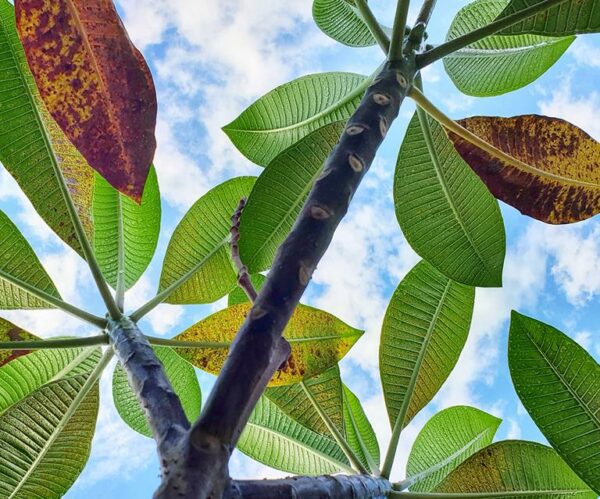Plumeria Plant Care: Plumeria Care and Grow Plumeria Tree

If you are looking for a beautiful statement piece for your garden, then a plumeria plant is a great option. Not only do these plants have stunning flowers, but they are also easy to care for. In this blog post, we’ll discuss the basics of plumeria care and maintenance and how to ensure your plants stay healthy and bloom for years to come.
What Are Plumeria Plants?

A Plumeria Plant is a tropical flowering shrub native to Central America, Mexico, and South America that produces large, colorful blossoms in shades of pink, yellow, white, red, and orange; and let’s be honest, who wouldn’t want a gorgeous Plumeria Plant in their home? But to take good care of it, you need to know what you’re doing! Provide your Plumeria Plant with bright sunlight and well-draining soil; make sure to water it only when the soil is slightly dry; don’t forget to prune the tips of the stems after blooming season; and watch out for pests like mealybugs, aphids, and scale. With a little love and care, you’ll have a beautiful, fragrant Plumeria Plant in no time!
The plants thrive in warm temperatures and prefer plenty of sunlight and well-draining soil for optimal growth Similarly, when caring for a plumeria plant, the plant must be kept in warm temperatures and given plenty of sunlight. Additionally, it is important for the soil to be well-draining and not overly wet. With these care tips in mind, even novice gardeners will find that plumeria plants are easy to maintain and grow!
The beauty of Plumeria Flowers

Flowers from the plumeria genus are prized for their stunning beauty and seductive scent. White, yellow, pink, red, and multicolored variations are just a few of the many colors that these tropical flowers come in. The petals have a distinctive, sweet scent that is frequently utilized in perfumes and other scented items. They are typically waxy and thick with a velvety texture.
The form of plumeria blooms is one of their most recognizable characteristics. With a conspicuous center that is frequently a different color than the rest of the flower, the petals form a five-pointed star configuration. While some plumeria blossoms have an appearance that is more rounded or cup-shaped, others are more elongated and pointed.
Plumeria blossoms are stunning, but they also hold cultural significance in many regions of the world. They are frequently used in traditional Hawaiian leis, where they are worn as a sign of love and affection on a string with other flowers. Plumeria flowers are frequently utilized in religious ceremonies and offerings in Hindu and Buddhist cultures because they are connected to devotion.
Overall, plumeria plants are a valued and highly sought-after tropical plant because to their beauty and aroma. These flowers are certain to please the senses and spread joy to everyone they come into contact with, whether they are cultivated in a yard or used in floral arrangements.
Benefits of Growing Plumeria

Owning a Plumeria plant has many benefits – from its beautiful blooms to its sweet, fragrant aroma. But with any living thing, proper care is necessary to ensure its health and vitality. The good news is that plumeria plant care isn’t as hard as you might think! They thrive in full sun and well-drained soil and can easily be transplanted when needed. Watering should be done regularly, but be careful not to overwater, as too much moisture can lead to root rot. In addition, fertilizing every couple of months will help keep the plant healthy and blooming. With a few simple tips, you’ll have your Plumeria looking its best all year long!
In addition to beautifying your home, these plants are also easy to care for. They require minimal maintenance, making them the perfect choice for busy people looking for an attractive houseplant.
Not only do these plants require minimal upkeep, but they also are easy to care for and bloom with minimal effort. So, if you want to take care of a plant without spending too much time on it, the plumeria is an excellent choice!
Plumeria Care and Grow Plumeria
To maintain your Plumeria plant’s health and long-term attractiveness, proper care is required. This includes fertilization, pruning, and appropriate watering.
To properly water your Plumeria, make sure you are not over-watering it. Too much moisture in the soil can lead to rot. Pruning is an important part of Plumeria plant care. The branches need to be trimmed once a year to promote healthy growth. Lastly, fertilizing should be done during the growing season with a diluted solution of fertilizer. Keeping up with these steps will help your Plumeria stay as beautiful and healthy as possible!
Watering is done two to three times a week, depending on the season. Make sure the soil is moist but not soggy. Pruning should be done in early spring to promote new growth and eliminate dead branches. Fertilize with a balanced fertilizer specifically designed for plumeria plants every two weeks during the growing period. Thereafter, taking care of your plumeria plant should become easier as you know what to do. A good watering routine two to three times a week, with the soil moist but not soggy. As well as pruning in early spring will set your plant up for success. Fertilizing every two weeks during its growing period will help make sure it’s getting enough nutrients. Properly caring for your plumeria plant will help it grow and bloom.
Extra Care Tips for Planting Plumeria Trees

Plumeria trees are tropical plants that produce beautiful and fragrant flowers. If you’re planning to plant a plumeria tree, here are some extra care tips to keep in mind:
- Choose the right location: Plumeria trees need full sun exposure to thrive, so choose a location that gets at least 6-8 hours of direct sunlight per day. They also prefer well-draining soil, so avoid planting them in areas that are prone to waterlogging.
- Provide regular watering: Plumeria trees need regular watering, especially during the hot and dry summer months. Water deeply once a week, and ensure that the soil is moist but not waterlogged. Avoid overhead watering, as this can cause the leaves to develop fungal diseases.
- Fertilize regularly: Plumeria trees are heavy feeders and require regular fertilization to promote healthy growth and flowering. Use a balanced fertilizer with equal amounts of nitrogen, phosphorus, and potassium, and apply it every 2-3 weeks during the growing season.
- Prune to encourage branching: Plumeria trees naturally grow in a tall and spindly shape, but you can encourage branching by pruning the tips of the branches. This will help the tree develop a fuller and more bushy shape, and also promote more flowers.
- Watch out for pests and diseases: Plumeria trees can be susceptible to pests such as mealybugs and spider mites, as well as diseases such as black tip fungus and frangipani rust. Monitor your tree regularly and treat any issues promptly with insecticides or fungicides as needed.
By following these extra care tips, you can help your plumeria tree thrive and produce an abundance of beautiful and fragrant flowers.
Plant Care for Plumeria Rubra
Plumeria rubra, also known as the red frangipani, is a tropical plant that produces beautiful and fragrant flowers. Here are some plant care tips to help your Plumeria rubra thrive:
- Light: Plumeria rubra needs full sun exposure to grow and flower well. Choose a location that receives at least 6-8 hours of direct sunlight per day.
- Soil: Plumeria rubra prefers well-draining soil with a slightly acidic pH. If your soil is heavy and poorly draining, you may need to amend it with sand, perlite, or other materials to improve drainage.
- Watering: Plumeria rubra needs regular watering during the growing season, especially during hot and dry periods. Water deeply once a week, and allow the soil to dry out slightly between watering. In winter, reduce watering to prevent root rot.
- Fertilizer: Plumeria rubra is a heavy feeder and needs regular fertilization to produce abundant flowers.
- Use a balanced fertilizer with equal amounts of nitrogen, phosphorus, and potassium, and apply it every 2-3 weeks during the growing season.
- Pruning: Prune your Plumeria rubra in late winter or early spring, before new growth starts. This will encourage branching and promote a fuller, bushier shape. Remove any dead, damaged, or diseased branches, and cut back any long, leggy growth.
- Pests and diseases: Plumeria rubra can be susceptible to pests such as mealybugs, spider mites, and scale insects, as well as diseases such as black tip fungus and frangipani rust. Monitor your plant regularly and treat any issues promptly with insecticides or fungicides as needed.
By following these plant care tips, you can help your Plumeria rubra thrive and produce an abundance of beautiful and fragrant flowers.
Troubleshooting Common Problems with Growing Plumerias

Troubleshooting common problems with plumeria plants starts with identifying the source. This could be a lack of nutrients, poor soil drainage, too much or too little sunlight, or pests and diseases. Before starting any plumeria plant care, it’s crucial to figure out what exactly is causing the issue — otherwise, anything you do might only be a temporary fix. Thankfully, with a little detective work and research, you can take the necessary steps to ensure your plumeria plants stay healthy and thrive.
Plumeria plants are susceptible to root rot if they are overwatered, so make sure to check the soil before watering and wait until it is dry before adding more water. Additionally, providing proper drainage for the soil will help reduce the risk of root rot. Furthermore, it’s important to ensure that your plumeria is receiving adequate light. If you can, position the plant in a spot near a window or outside in a sunny location to ensure it has enough light. Lastly, if you want your plant to bloom abundantly, make sure it’s receiving proper nutrition by applying fertilizer every five weeks during the active growing season. Following these tips will help you keep your healthy plumeria plant thriving!
Pests can also be problematic – look for signs of mealybugs, scale insects, and other small pests on the leaves of your plumeria plants and treat accordingly with insecticidal soap or neem oil solution Next, when it comes to plumeria plant care, remember to keep an eye out for pests. Mealybugs, scale insects, and other small pests can be problematic for your plumeria plants if not treated quickly. To address this issue, turn to an insecticidal soap or neem oil solution for a quick fix. With proper care, your plumeria plant can last a long time.
Conclusion
In conclusion, a plumeria plant is a great way to brighten up your garden and add a vibrant, colorful accent to any outdoor space. With proper care and maintenance, these plants not only look beautiful but are also incredibly easy to keep alive and healthy. So, if you’re looking for an eye-catching statement piece for your garden, why not consider a plumeria plant?
